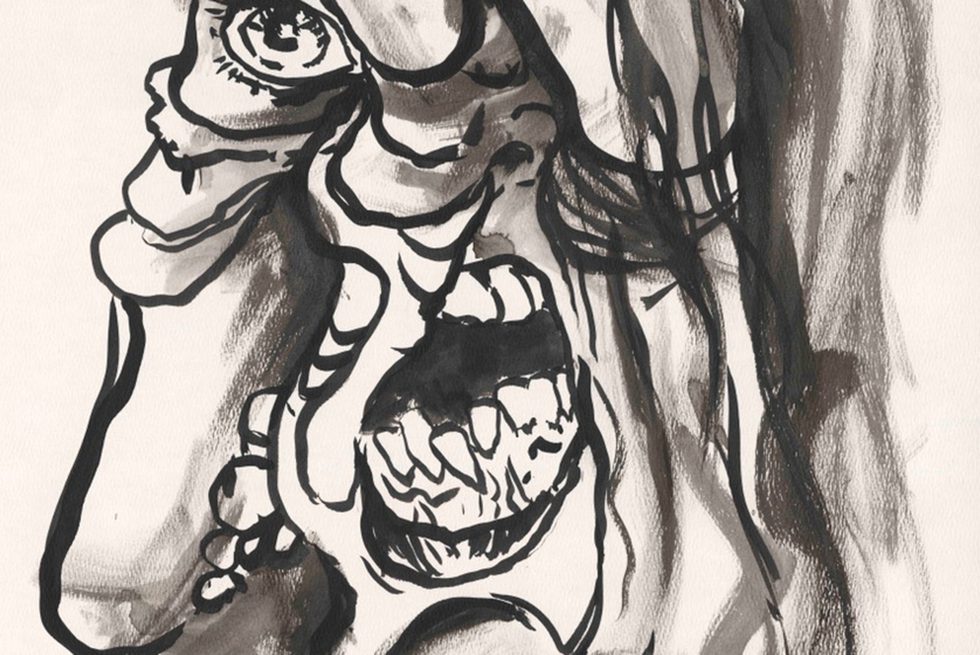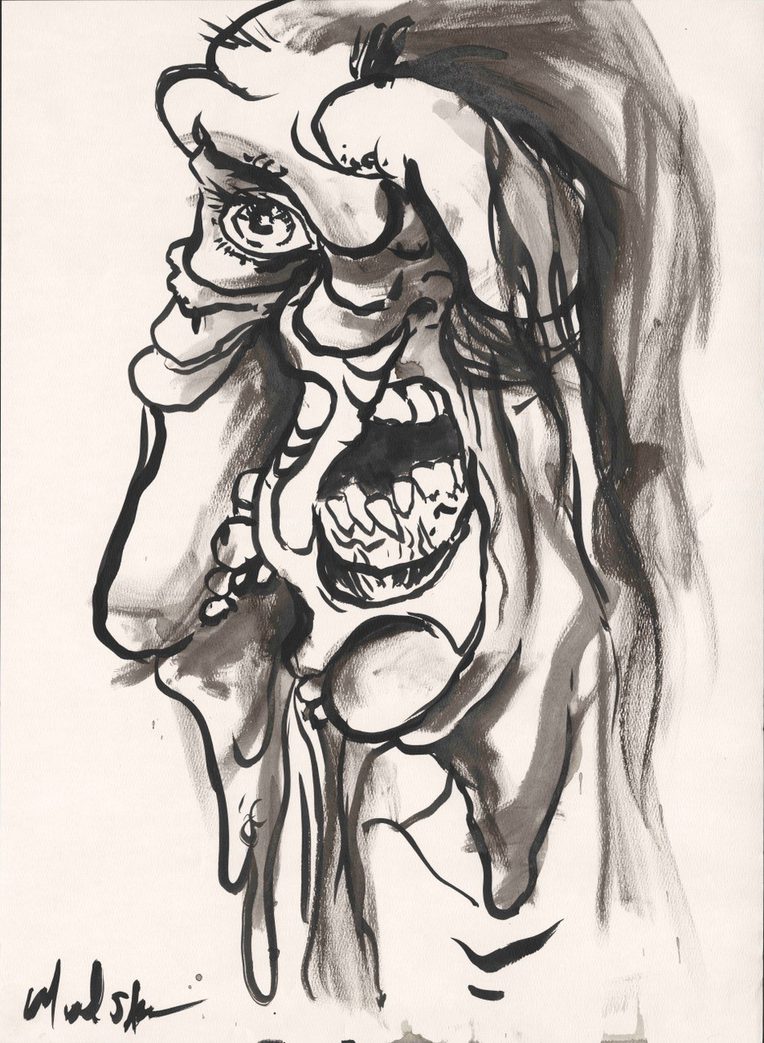Tuil
From the Series: Time of Monsters
From the Series: Time of Monsters

My name is Tuil. I am no monster. But I am becoming monstrous. I cannot say exactly when it began, but I remember the ache. That ache became agony as my skin began to pull ever further away from my flesh. Membrane. Epimysium. Lymph. I feel them now in a way that is not right. It is a strange strangeness. They call it hydrosepsis.

I couldn’t tell you the date, but it began with boils. They were hot to the touch, painful to the bone. Like an Industrial Age fire, my boils began to bubble and erupt. Now they grow longer and thicker. Blooming. Hanging in putrid folds of waterlogged cells down my arms and legs, my back, my belly, my whole self. I have been experiencing a Great Acceleration.
I am being gassed.
But maybe I am getting ahead of myself here. Telling you the story upside down. Because this could just as easily be a tale in the future subjunctive, a speculative stab of how it might have been, in order for it to be.
A long time ago, some got the skin that would grow and hang in water-filled folds. Most of them had been living for a long time. But I am not old. I thought it was too soon for me to face the trouble. Everyone feared that it was contagion, that the sickness had found its way on the wind, stealing through gaps and fissures before touching down and sealing in. What we did not know then is that this was no viral matter, no bacteriological creature that makes the skin creep. It is not airborne infection. Even if it was, even if it is in the air.
They say that ice used to cover the ends of the world, top and bottom, floating across seas. How was that even possible, I remember asking. But I never got the answer. Then ash began to fall in the morning. By that time, they had remade the early Eocene, the time of fifty million years ago. In Eocene times palm trees grew in high parts of the North. Crocodilic animals were there too. But now those kinds of creatures are long gone. We never did make kin with them. We were told to look for “a break in the pattern. A snarl in the weft”—to find “things that are missing, and conspicuous by their absence.” But we never knew what to see in the gap.
Some of us have attunements. Others have attentions. I have more senses than the usual number. Because this skin is a kind of feeler: my condition a symptom of carbon dioxide loads in the air. While I know why I am this way, I can’t seem to find a way to get it undone.
What starts as fire, burning and burning and burning, in the end turns to liquid. I fill with water from the inside. Drowning in my own skin. I sometimes wish I could burst. But instead my hydroseptic skin stretches in an ooze of watery containment.
The epidermis is two layers: the skin that protects from infection, and the organ that controls how much of our bodywater leaks into the air around it. Transepidermal water loss. But not mine. It won’t let go. It keeps on filling and flooding.
I know I am not alone. I know that you plus one is two (see Jemisin 2015, 105). And I still hope for a cure, somewhere here, out at sea.
This is why I am now afloat, navigating an acid ocean and hoping to find a cure. A way to adapt. The ability to sustain myself.
Out at sea I’ve gotten to know the jellyfish. The beautiful ones. The stinging ones. The megazooplankton whose tentacles hang into oblivion. So much gelatinous fauna, now filling all of the seas. There are the cnidarians: the Hydrozoa, Scyphozoa, and Cubozoa. Carnivores that sting to the death. The medusas. The ctenophores, comb jellies lilting and heaving. And the pelagic tunicates, feeding by filter, gorging on bacteria and virus.
More than 550 million years of evolution. Among the oldest animals in the world. In their time of origins, the carbon dioxide was concentrated and thick in the air: seven thousand parts per million. They have neither brain nor nervous system. They are almost totally, purely made of water. I see myself in them. Though they are often almost invisible. Maybe they would see themselves in me, if they could see. Together we linger in the salty sublime.
It is a relief to float. To drown in my own skin more comfortably, held aloft by the brine of the sea.
All of that fire, now turned to water.
Timothy Morton (2010, 275) has described the feeling of an uncanny encounter with a stranger who is both familiar and peculiar as a “strange strangeness.” Morton derives the strange encounter from Jacques Derrida’s notion of the arrivant: a being whose being cannot be predicted and who arrives unexpectedly, but whose unexpected arrival is also unexpectedly expected. As though we should have known. In Morton’s (2010, 275) terms: “The strange stranger is not only strange, but strangely so. They could be us. They are us.” Tuil is likewise us, or a speculative future iteration of us—a contorted form of being that is both disturbingly familiar and obscenely strange.
In N. K. Jemisin’s (2015) Hugo Award–winning novel The Fifth Season, Jemisin’s characters are set in in a place called the Stillness where they come to experience the end of the world. In the Stillness, no one speaks of certain things and humans are ephemeral beings who do not notice what is missing, only what is there—that which is open to human perception, cognition, and will. Jemisin (2015, 150) thus invites her characters to find the “break” of the pattern, the messy nest of tangle that she calls a “snarl in the weft.” The impulse to turn toward that which is missing, that which is conspicuous in its absence, evokes Morton’s “strange strangeness”—the uncanny perception that something is lurking beneath the surface, but unsurfaceable. In the context of the ecohuman precarities in which both Tuil and we live, I am interested in gaps of perceptibility, speakability, recognition, and that which cannot or will not be known. This is the negative space of a climate curving in parallax form toward the unrecognizable. In this, of course, we are not alone or ir/responsible, because “you plus one is two” (see Jemisin 2015, 105).
Jemisin, N. K. 2015. The Fifth Season. New York: Orbit.
Morton, Timothy. 2010. “Thinking Ecology: The Mesh, The Strange Stranger, and the Beautiful Soul.” Collapse, Volume 6, edited by Robin Mackay, 265–93. Falmouth, UK: Urbanomic.